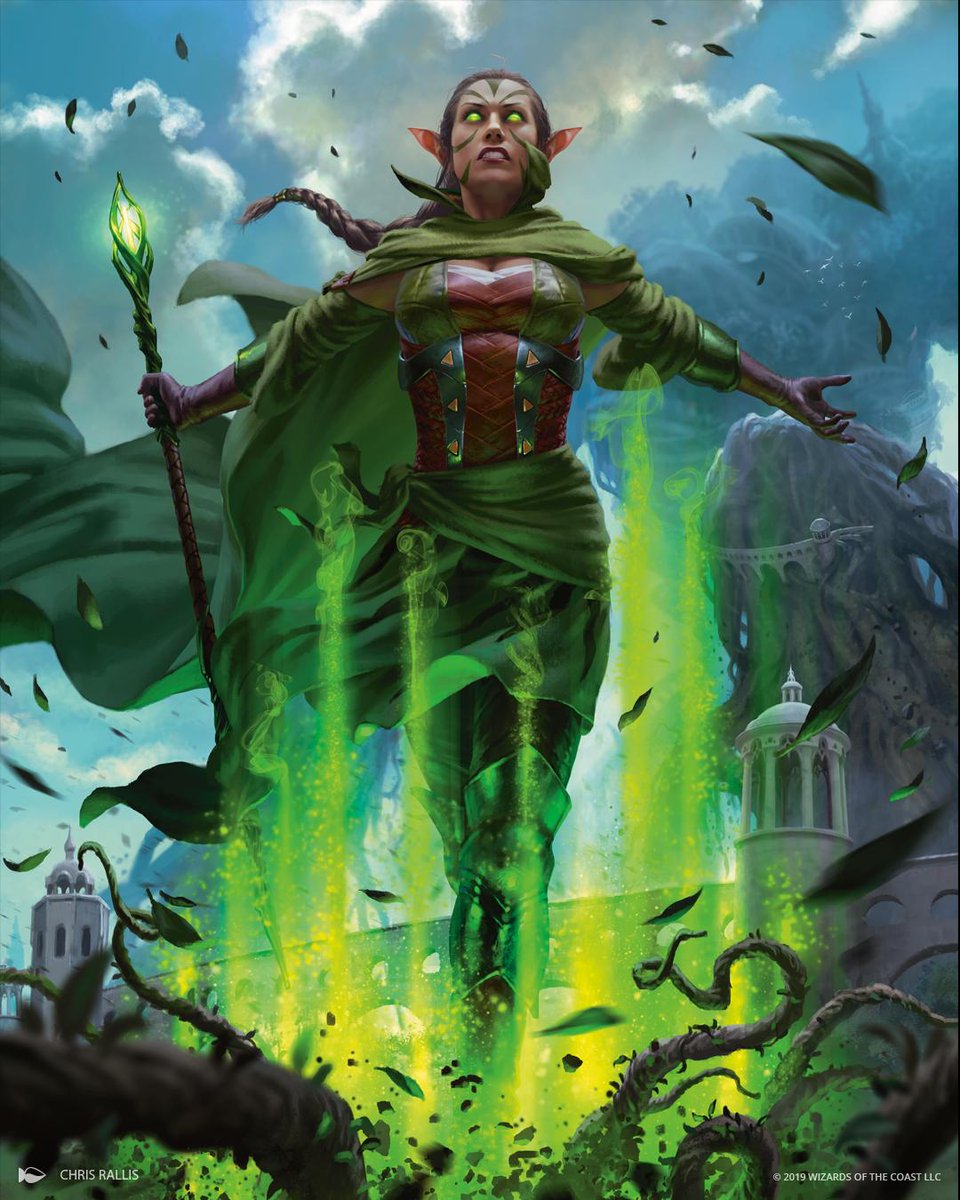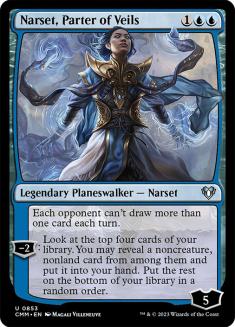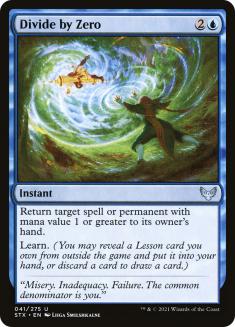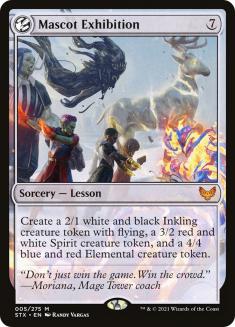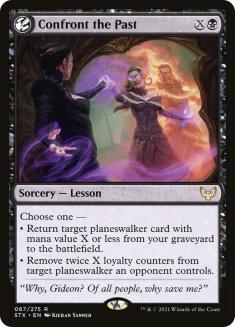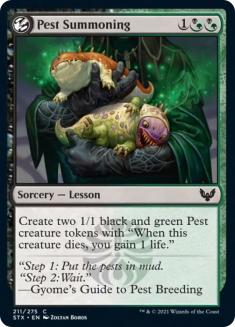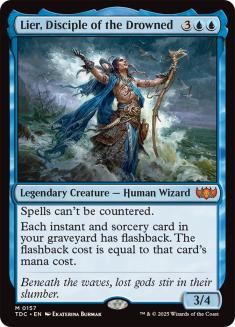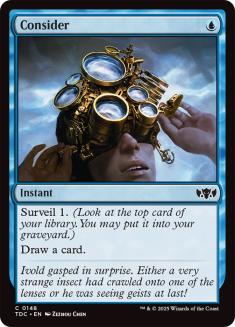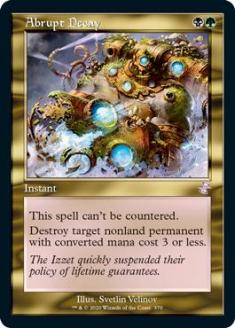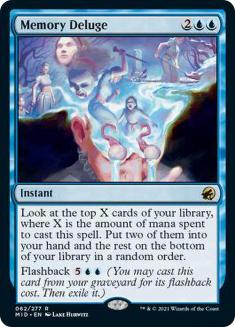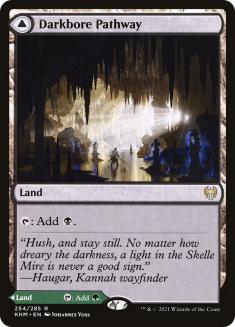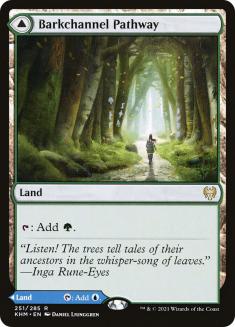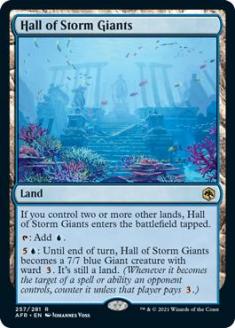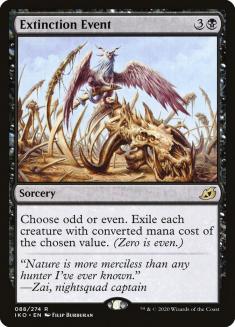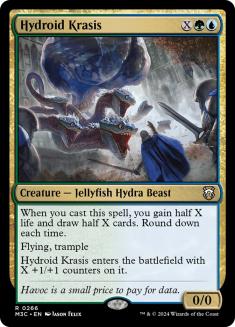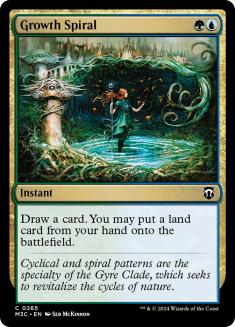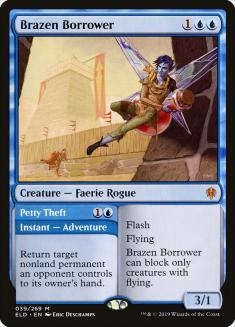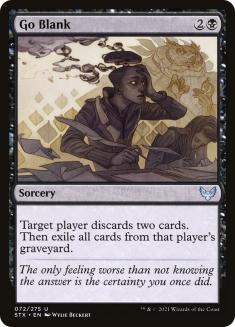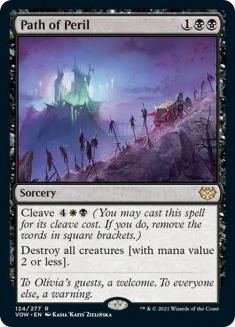Over the last few weeks, I’ve dipped my toes right back into the format that helped launch my streaming career. Pioneer has been good to me, even if we disagree on some specific principles or what cards should and should not be banned. Regardless, the current Pioneer format is full of fun gameplay and a plethora of decks to choose from.
I’ve noticed that the metagame has somewhat devolved into a Rock-Paper-Scissors metagame. Mono-Red beats Jeskai Ascendancy beats Arclight Phoenix beats Thoughtseize. Something like that, anyway. Mono-Red Aggro punishes Jeskai Ascendancy with Eidolon of the Great Revel, while Jeskai Ascendancy preys on Phoenix decks trying to interact with creatures. Those same Phoenix decks play Treasure Cruise and other draw spells in high numbers, making discard effects like Thoughtseize much worse. That isn’t to say that each of these matchups is impossible, but that there is certainly some naturally occurring favorites among established archetypes, and you would be wise to learn most of them so you can leap onto the right train at the right time.
For now, I think it’s the right time to be Thoughtseize, if only because Arclight Phoenix decks get dumpstered by Jeskai Ascendancy. As the combo decks have risen in popularity, the Arclight Phoenix decks are starting to struggle. That isn’t to say they don’t exist anymore, but they’re certainly weak to the format’s most popular and successful deck, making it a risky proposition. A few weeks ago, Harlan Firer sent me a Sultai Midrange list featuring a lot of Abrupt Decay. It was a nod to needing removal for aggro, while also doubling up as interaction for specifically Jeskai Ascendancy and other weird permanents. I dismissed it at first, seeing a lot of things I didn’t like, but Harlan kept testing it himself and came to me with an updated build that looked a lot cleaner.
The Evolution of an Archetype
Building and rebuilding a deck based on results is exactly how you mold and evolve archetypes in Magic. Today’s article will go over the initial build of Sultai Midrange that Harlan sent me, as well as go over the changes I made as I played the deck more. Ultimately, our goal is to come to a “current best iteration,” but that will always be in flux. Sultai is a cool midrange shell that can be customized to fit your general state of mind, and the Sultai colors offer quite a bit of interaction, variable finishers, and sideboard options.
Here’s where we’ll start in today’s article.
Creatures (6)
Planeswalkers (6)
Lands (26)
Spells (22)

This deck revolves around Nissa, Who Shakes the World, utterly and completely. It is the reason to play the deck, and provides the necessary amount of mana necessary to cast some of our more expensive cards. It provides you with immediate pressure split among multiple bodies, and just allows you overwhelm any opponent who has stumbled earlier in the game.
Nissa, Who Shakes the World has been a staple in Pioneer since the beginning, being the best threat in Mono-Green Devotion by quite a bit. It helped fuel a lot of the big-mana shenanigans I got up to, and this deck does its best impression of the same gameplan. While this midrange deck doesn’t use its mana quite as well as the Mono-Green Devotion deck, Nissa is still a huge part of it, and I can’t imagine playing the deck without it.
This build of Sultai in particular reminds me of the later days when Nissa was in Standard, using it to untap dual lands like Overgrown Tomb to cast two-mana spells off it. Abrupt Decay and Heartless Act can be used in the same way, after attacks, and after casting your Nissa when you hit five mana. We even get an extra multicolor land in Zagoth Triome to cast any and all two-mana spells for that big tempo boost on your money turn.
Narset, Parter of Veils is an exceptional Magic card, but it shines in decks that don’t tap out often. You want Narset in a deck with very few creatures, and you also need to understand the spots in which it isn’t very good. Narset shines against control and Jeskai Ascendancy, acting as a complete hoser for anyone trying to play Treasure Cruise. Against aggro decks, it’s often just a three-mana planeswalker that cycles and gets dunked on by a horde of little minions.
Honestly, Narset feels more like a tech card, and maybe even a sideboard card. My first League with Harlan’s build had me wanting to cut it, even though I know just how good it can be against the blue decks. Unfortunately, my experience was battling it out with Orzhov Humans and Mono-Red Aggro. I also missed multiple times on Narset, which is par for the course when your deck contains any number of creatures and a high land count.
The first list that Harlan sent me a few weeks ago did not contain Divide by Zero, but I think it’s good enough to fit the bill here. It looks weird on paper, but when you actually play with it, you see just how good it can be. The mana sink effect of finding Mascot Exhibition or the smoothing nature of Environmental Sciences is just as good in Pioneer as it is in Standard. The curve in Pioneer usually starts at one or two for most decks, but most opponents will try to hit you with a haymaker at some point. Even decks that play Lurrus of the Dream-Den have some juicy targets for Divide by Zero.
The best part about Divide by Zero is that it is rarely bad in any matchup. The only decks where it really falters is against slower blue opponents, because they have few permanents worth bouncing and most of their spells are just “do something, draw a card.” However, it’s useful enough and adds a different element to the deck, so I doubt I’ll be trimming on them much anytime soon.
Like in Standard, Environmental Sciences is the closest we’re gonna get to a “real spell” when it comes to the lesson cards. Finding a land and gaining life is pretty sweet, even if one mana is too expensive for normal costs. As I said earlier, Mascot Exhibition is a great mana sink for Nissa, Who Shakes the World, but you don’t usually want to grab it first. In a pinch, Confront the Past can save you from an opposing planeswalker or bringing back your own, but I didn’t find myself getting this one too much. Harlan thinks Pest Summoning could be better, as providing you with two chump blockers that gain life against aggro is pretty cool. I’m inclined to agree.
I liked Lier quite a bit, but mostly because of how well it works with Divide by Zero. The double bounce is sick, and even just casting Environmental Sciences twice can gain you enough life to survive a creature rush or flurry of burn spells. For the most part, you’ll just use Lier to cast more removal spells or cheap interaction, but I think two copies is too many. I don’t ever want to draw two, and there aren’t actually that many ways to kill it in Pioneer. Redundant copies just aren’t as useful here as they might be in Standard.
I wasn’t a huge fan of Consider. I regularly wanted to cast Fatal Push or Thoughtseize on the first turn, and felt myself rarely having one errant mana up afterwards. If I did want to play Consider, I would often have to take two damage from a shockland. This deck does a great job of using most or all of its mana every turn, which ends up making cards like Consider significantly worse. Consider is also better in decks where you play primarily at instant speed, so you can hold up mana on your opponent’s turn for interaction. Divide by Zero plays into this style, but we’re more tapout midrange than we’ve ever been draw-go control.
Abrupt Decay was the reason to play this deck if you ask me. Having that removal spell answer Jeskai Ascendancy is lit, as traditional removal spells are often dead against non-creature decks. Even the control decks in the format are playing Detention Sphere and other permanents that get tanked by Abrupt Decay, making a slot that is normally dead into an important interactive game piece.
Memory Deluge was not at the top of my list when I first played this deck, if only because I felt like we wanted more permanent-based threats. However, after playing the deck a bit, and after the addition of Divide by Zero, I have grown to love it. Memory Deluge is another one of those cards that lets us use all of our mana over the course of multiple turns, and it is one of the best possible draws when we’re on empty. It’s possible we add enough cards to our graveyard that we should be playing Dig Through Time instead, but I’ve seen most blue decks that want that effect play one or two of each, depending on how well their cards hit the graveyard.
With all that in mind, let’s take a look at the second build of the deck.
Creatures (6)
Planeswalkers (6)
Lands (27)
Spells (21)

I found myself taking quite a bit of damage over the course of the first few turns, as well as my lands entering the battlefield tapped a little too often. Fabled Passage helps enable Fatal Push, but is slow and forces you to go overboard on playing basic lands. With mana constraints as rough as those required for playing both Narset and Abrupt Decay, it is important that our lands are modal or enter the battlefield untapped, but preferably both.
The Pathway lands are some of the best ever made, and I think they’re almost perfect here. There is the occasional awkwardness with Abrupt Decay and the blue half of these lands, but you can usually sequence them so you don’t take much damage. I think this change is one of my favorites, but it probably needs a little more work. As I like to say, building a manabase is not a direct science. You gotta feel it out and make small adjustments as you go. You can have a manabase that is built to be able to more likely cast X color more than Y, but it changes based on the amount of damage it deals you, how often it enters the battlefield tapped, or how often it screws you over to Field of Ruin.
Hall of Storm Giants was impressive, and replaced a Hive of the Eye Tyrant in a split. The color was able to support two Islands in the previous build, so changing out Fabled Passage for Pathways made the mana better, even if we’re putting a land into our Abrupt Decay deck that only taps for blue. It singlehandedly won me a match, as that mana sink and huge body with a protective element just made interacting too hard for our opponent.
I cut down to two Thoughtseize, but I don’t think that will prove right in the long run. Thoughtseize is one of the best cards in the format, and the aggro decks often play Lurrus of the Dream-Den or protective elements like Gods Willing. I will be adding the third, and maybe fourth, in future builds.
I really loved the singleton Extinction Event in the first build, so I added a second. While sweepers are weak with creatures of your own, Extinction Event can allow you to dodge your own card, assuming your opponent is trying to swarm you with ones and threes. The exile part has been impressive on top of being a normal sweeper. Overall, it was just a great card, and I would continue playing two in the maindeck moving forward.
This was a major addition to the deck, but it actually fell pretty flat. We’re so constrained on resources trying to trade one-for-one that the only times where casting Hydroid Krasis is worth it is after you already have Nissa, Who Shakes the World on the battlefield. We need threats like that to be good across multiple turns in multiple game states. In the future, this card will not be in the deck.
With 27 lands, Growth Spiral will usually be useful. It is one of those cards that gets better when half your deck is full of lands. During the era of Uro, Titan of Nature’s Wrath, Growth Spiral was excellent, and both combined gave heavy incentive to make half your cards lands. Nowadays, we’re just lucky to get to play a land off it when we’re playing 27!
In the first game of a match, it’s better to play cards that are more diverse. Ramp effects like Growth Spiral are excellent in the first game because you don’t have to fill those slots with the “wrong” kind of interaction. Removal is bad against control, so you’d rather play Growth Spiral. Negate is bad against creature-based decks, so you’d rather play Growth Spiral. It’s a neutral card that offers some small advantage for a small price. A few just make sense.
Overall, this build of Sultai Midrange felt a little weak in the late-game department. I found myself regularly getting clowned whenever I would cast Narset, though a big plus was that I rarely had mana issues. Adding a land meant we didn’t get mana screwed too often, and the Pathways were more than smooth. Even Growth Spiral did some work in helping us get into the later turns more quickly. The one downside was cutting one-drops with Growth Spiral, which made it very likely that we play the land tapped instead of getting that one mana tempo boost.
My losses with this build were to Izzet Phoenix, which I consider a horrible matchup, and also Boros Heroic. The Heroic decks aren’t usually that bad, but everyone gets mana screwed now and again, and Boros Charm is one hell of a card. When I’m making changes to a deck, I go by feel and how versatile each card was in different situations. The above comments about each card reflect my direct thoughts on each, and the iterations of deck are my implementation of the changes I want based on play experience. The following list is what I’ll be trying next.
Creatures (5)
Planeswalkers (4)
Lands (26)
Spells (25)

The biggest change to this version is the addition of Shark Typhoon, one of the best win conditions to come out in the last few years. The fact that it can cycle is pretty dope, but mostly I just think it adds some texture to your hand when you’re holding up removal and Divide by Zero. If your opponent is trying to play around stuff, having a combination of different things to throw at them is important, and them all having flash or being flash adjacent leads to games that are impossible for your opponent to make the “correct” decision.
Shark Typhoon also gives us some early cycling to help hit land drops. I love it for this reason, as some of the more common plays include cycling it on the third turn to make a 1/1 to chump block or trade with a smaller opposing threat. When Nissa is active, it turns Shark Typhoon monstrous. Seeing a pattern? The best cards in these style of decks are the versatile ones that perform two functions based on how much mana you have access to.
I don’t want a lot of creatures in the deck, specifically because I’m trying to blank all their removal in the first game. Brazen Borrower hits the perfect balance between threat and interaction, giving you a way to reset some annoying permanent while giving you a flash threat that can pressure an opposing planeswalker or help overload your opponent when you have Nissa active.
This has been a sideboard card in the past, but I’ve been hit with it enough times from maindeck opponents to realize it’s just a great card. I’ve been sleeping on playing it maindeck, but even aggro decks are usually using the graveyard to some degree. And, if they’re playing around Extinction Event or something else, they could sandbag a few cards in hand. It also works well with Divide by Zero to snag your opponent’s best permanent.
This card has grown in pedigree over the last month, but I think it has always been great. People are just now realizing that Mind Rot plus Tormod’s Crypt is actually a pretty good deal for three mana.
Boros Heroic and other aggro decks need to be knocked down a peg, and Path of Peril is here to do just that. This works in the same way Fatal Push works against Lurrus, in that it can kill basically all their creatures except for the Lurrus. Path of Peril is the only one of this bunch that hits all the creatures from Boros Heroic, which is fairly popular in Pioneer at the moment. While it does kill your Sylvan Caryatid, it’s a small price to pay, and you can always choose to play around your own spells by sideboarding out Sylvan Caryatid, which is traditionally weak to decks playing Titan’s Strength and prowess creatures.
The Work Is Never Done
Harlan and I have been discussing this deck at length both on stream and in private messages. He loves the archetype, and I’m slowly starting to come around. Thoughtseize and Fatal Push are excellent and cheap interaction points, so building around them just makes sense. This Sultai Midrange strategy looks to use those on turns other than the first, allowing for double-spell turns with extra mana generation like Sylvan Caryatid. Normal ramp decks are trying to “skip” steps in the curve, but we’re more interested in raw mana generation and the defensive nature of the 0/3 hexproof body.
Nissa is the key to this archetype, and is likely the best top-end threat for any midrange deck that’s playing green. The extra mana just means we’re able to turn modal threats and answers into super-charged versions as the game progresses. On top of that, Nissa doubles as one of the more potent win conditions in Pioneer, even if the 3/3 bodies themselves aren’t all that threatening. It’s more about resiliency and the mana generation than it is actually attacking with the 3/3s, but they still hit pretty hard and generate a lot of mana seeing as they have haste and vigilance.
I’ve been loving Pioneer lately, so if you’re interested in learning more about the format, I recommend checking out some of my other content. You can find it on my Twitch or YouTube channel.

